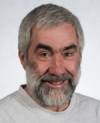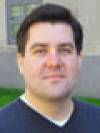Table of Contents
Agenda
The scientific program includes Keynotes by leading researchers in the field and selected presentations of contest dataset analyses.
The two-day meeting also features a poster session and opportunitoes for informal discussions during a social dinner on Friday.
The conference closes on Saturday in time for delegates to join to the City Hall evening reception of ISMB/ECCB.
Sign up to our low-volume CAMDA 2011 announcements mailing list!
Keynotes
We are delighted to welcome you to the CAMDA keynote talks by established experts in the field.
Terry Speed
 Professor Terry Speed heads the Bioinformatics division at the Walter and Eliza Hall Institute of Medical Research (WEHI), in Melbourne, Australia.
Professor Terry Speed heads the Bioinformatics division at the Walter and Eliza Hall Institute of Medical Research (WEHI), in Melbourne, Australia.
Terry has made key contributions to microarray analysis, and has early identified the need for thorough low-level analysis of the data. His research interests include a large variety of applications, such as his recent contributions to the study of confounding factors in genome wide DNA methylation measurements or his research work on base calling for resequencing chips.
John Storey
 Professor John D. Storey heads the Genomine research group at the Lewis-Sigler Institute for Integrative Genomics of Princeton University.
Professor John D. Storey heads the Genomine research group at the Lewis-Sigler Institute for Integrative Genomics of Princeton University.
John's group is interested in the analysis of high-dimensional data sets, such as large-scale genotyping or gene expression profiles. He has developed efficient approaches to the multiple-testing problem central to the field. His recent research addresses challenges of integrating multiple genome wide data sources and the identification of confounding structures.
Stefano Volinia
 Professor Stefano Volinia is a Researcher at the Department of Morphology and embriology and heads the Data Mining for Analysis of DNA Microarrays Telethon Facility of Ferrara University
Professor Stefano Volinia is a Researcher at the Department of Morphology and embriology and heads the Data Mining for Analysis of DNA Microarrays Telethon Facility of Ferrara University
Stefano has a background in cancer genetics and bioinformatics. As a postdoctoral fellow at Ludwig Institute for Cancer Research (London, UK), Harvard Medical School (Boston, MA), and Telethon Institute for Genetics and Medicine (Italy), he carried out extensive studies on both cancer biology, in particular signal transduction, and analysis of genomics data. He developed and applied new tools relevant to miRNA function in cancer. Recently, he became involved in the application of next-generation sequencing to cancer genomics. This work involved both digital expression studies of miRNome and transcriptome and mutation detection.
Preliminary Schedule
Friday, 15 July
A full preliminary schedule is now available below!
Break times are coordinated with those of other Satellite Meetings and Special Interest Groups on-site with ISMB/ECCB to facilitate an exchange with colleagues also beyond CAMDA itself.
| 08.40 – 09.10 | Registration |
| 09.10 – 09.15 | Welcome address |
| 09.15 – 10.15 | Dealing with the GC-content bias in second-generation DNA sequence data. Terry Speed (Bioinformatics division, WEHI, Melbourne, Australia) – Keynote |
| 10.15 – 10.45 | coffee break |
| 10.45 – 11.45 | Biomarker robustness reveals the P38 network as driving disease outcome in GBM patients in multiple studies and miR-9 as a possible control agent. Rotem Ben-Hamo and Sol Efroni (Bar Ilan University, Israel) |
| 11.45 - 12.30 | Whole exome resequencing reveals an unexpected amount of variability with possible functional consequences in human microRNAs. Javier Santoyo (Andalusian Center for Human Genomic Sequencing, Seville, Spain) |
| 12.30 – 13.30 | cold lunch + posters |
| 13.30 – 14.30 | A Statistical Method to Estimate DNA Copy Number from Illumina High-density Methylation Arrays. Simon Lin (Northwestern University, Chicago, U.S.A.) |
| 14.30 – 15.30 | Differential expression in RNA-seq: a matter of depth. Sonia Tarazona , Fernando Garcia-Alcalde, Alberto Ferrer, and Ana Conesa (Centro de Investigacion Principe Felipe, Valencia, Spain) |
| 15.30 – 16.00 | coffee break |
| 16.00 – 17.00 | Methods for integration of genome-wide miRNA and mRNA paired expression data sets. Stephan Gade, Stephan Artmann, Klaus Jung and Tim Beissbarth (DKFZ Heidelberg & University Medical Center Göttingen, Germany) |
| 18.00 – late | excursion to the vineyards and dinner at Weingut Cobenzl |
Saturday, 16 July
| 08.40 – 09.10 | Registration |
| 09.10 – 09.15 | Session overview |
| 09.15 – 10.15 | The roles of miRNAs in cancer. Stefano Volinia (Telethon institute, Ferrara University, Italy) – Keynote |
| 10.15 – 10.45 | coffee break |
| 10.45 – 11.45 | Systematic Use of Computational Methods Allows Stratifying Treatment Responders in Glioblastoma Multiforme. Riku Louhimo, Viljami Aittomäki, Ali Faisal, Marko Laakso, Ping Chen, Kristian Ovaska, Erkka Valo, Leo Lahti, Vladimir Rogojin, Samuel Kaski and Sampsa Hautaniemi (Aalto University and University of Helsinki, Finland) |
| 11.45 – 12.45 | Portraying high-dimensional -omics data with individual resolution. Hans Binder, Mario Fasold, Lydia Hopp and Henry Wirth (University of Leipzig, Germany) |
| 12.45 – 13.30 | cold lunch + posters |
| 13.30 – 14.30 | Dissecting Inflammatory Complications in Critically Injured Patients by Within-Patient Gene Expression Changes. John Storey (Lewis-Sigler Institute for Integrative Genomics, Princeton University, U.S.A.) – Keynote |
| 14.30 – 15.30 | Controlling the false discovery rate at detection of biological aberrations in -omics data. Djork-Arné Clevert, Andreas Mayr, Andreas Mitterecker, Günter Klambauer, and Sepp Hochreiter (Johannes Kepler University Linz & Charité University Medicine, Berlin, Germany) |
| 15.30 – 16.00 | coffee break |
| 16.00 – 16.50 | Sample size considerations for the efficiency of extracting regulatory connections from a combined miRNA and gene expression data set. Smriti Shridhar (Boku University Vienna) |
| 16.50 – 17.50 | A three-state model for multidimensional genomic data integration. Karol Baca-Lopez, Maria Correa-Rodriguez, …, Enrique Hernandez-Lemus and Claudia Rangel-Escareno (National Institute of Genomic Medicine, Mexico) |
| 18.00 – 18.15 | CAMDA Award, Conference closing |
| 20.00 – late | (reception at City Hall for ISMB/ECCB delegates) |
We look forward to seeing you in Vienna!
 The social programme includes a trip to a local Heuriger country style restaurant/pub owned by the City of Vienna in the lush vineyards just outside town (Weingut Cobenzl).
The social programme includes a trip to a local Heuriger country style restaurant/pub owned by the City of Vienna in the lush vineyards just outside town (Weingut Cobenzl).

